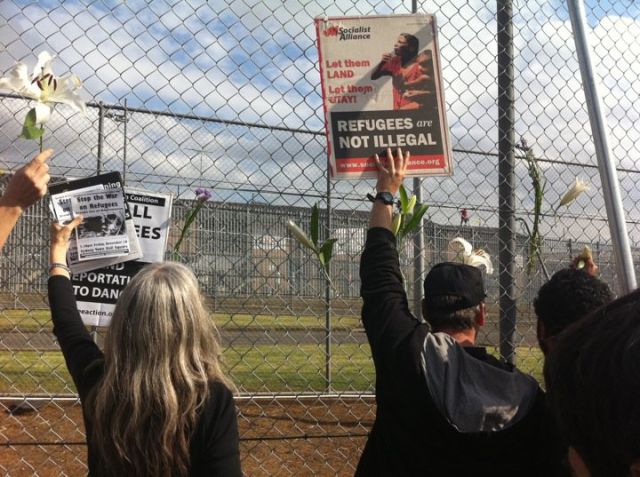
When I met Kathir (not his real name), in the maximum security stage of Villawood Detention Centre just before Christmas, he had been on hunger strike for five weeks.
The Tamil refugee from Sri Lanka was protesting against ASIO’s negative security clearance assessment of his asylum claim. This assessment — made entirely in secret — allows him to be held indefinitely.
Kathir lost two of his brothers in 1990 and 1991. One was killed in an ambush at a university in the north eastern Sri Lanka, the other was caught in cross fire in a battle between the Sri Lankan army and the Liberation Tigers of Tamil Eelam (LTTE), who fought against the Sri Lankan Army for Tamil independence in the 1983-2009 civil war.
In 1990 the Sri Lankan army abducted Kathir’s father. Kathir still does not know where he is.
The civil war ended in May 2009 after a five month army offensive that killed 30,000 Tamil civilians.
Hundreds of thousands of survivors were rounded up and held in concentration camps.
Kathir fled Sri Lanka in June 2009 on a small, old boat. Out of the 193 Tamils who fled with him, 188 have been given refugee status.
Refugees have to pass ASIO security clearance checks before being released into the Australian community. This process has a number of flaws. For a start, it is secret. Refugees who receive a negative assessment are not told why.
It appears that Tamil refugees are failing the ASIO checks because of alleged involvement with the LTTE. The probable source of these allegations is the brutal Sri Lankan regime that the refugees are fleeing.
The Sri Lankan government branded the LTTE as terrorists, but much of the Tamil population.
Moreover, during the 2002-2006 ceasefire, the LTTE was the de facto governing authority in much of the north and east of Sri Lanka, including during post-tsunami reconstruction. This means that anyone who worked in the public sector in these regions at this time — for example teachers and health workers — could be said to have LTTE links.
In October 2009, the immigration department ruled Kathir was a genuine refugee. On October 11, 2010, ASIO declared Kathir had not passed security clearance. This means while he cannot be deported, neither can he settle in Australia.
As the negative ASIO security assessment is likely to prejudice his chances of being resettled in other countries, he faces the possibility of being detained for life, without having been charged with any crime.
A missing finger on Kathir’s right hand speaks volumes about his refugee claim. “It was lost in a bomb blast,” he said.
“Yes, Kathir had suffered torture at the hands of the Sri Lankan army,” explained a Tamil friend visiting him in Villawood. “There are scars and injuries all over his body.”
Kathir went on a seven-day hunger strike after being told of his rejection. On the seventh day ASIO returned and conducted a five hour interview. They told him they would “not open his case again unless the Department of Immigration requests it”.
Kathir continued his strike for 49 days before he was taken to Liverpool hospital and placed on a saline drip.
Now back in Villawood, he is under 24-hour surveillance, eating and drinking only a little.
The immigration department is clearly worried about his case. They visit him every weekday. They should be worried. He has lost 20 kilos in five weeks.